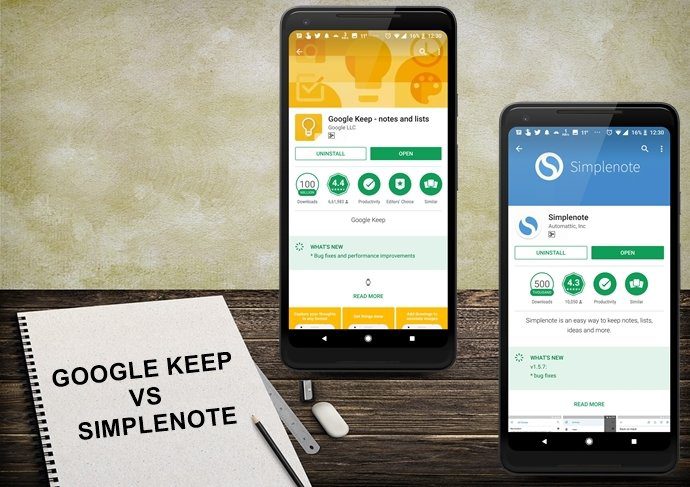Apple redesigned the iOS 13 Health app with new interface and features. Samsung isn’t far behind either. The company is integrating more fitness functions in Samsung Health, and recently made the app available on iOS too. There are some other options from Google and Fitbit too. But Google Fit is too basic, while Fitbit requires compatible wearable to operate. In this post, we will pit Samsung Health against the Apple Health and decide which service fits your usage. Of course, I am assuming that you possess or plan to buy an Apple or Samsung wearable or phone if you don’t own one. Let’s jump in.
Availability and Device Support
As its case with every Apple service, the Health app is only available on iOS. And it’s supported by iPhone and Apple Watch Series. Samsung health is available on iOS and Android. You can track the data with any iPhone or Android device, and Galaxy wearables. Download Samsung Health on Android Download Samsung Health on iOS
User Interface
Apple Health is pretty straightforward. You can see the favorites data from the homepage. By default, it shows the steps data, floors climbed, and walking/running distance. The highlights section displays the on-going trend of your activities for the current week. Scroll down to find the health-centric posts that are helpful for in-depth research. Apple Health also suggests the compatible apps from the App Store to use the app at full potential. You can tap on the profile icon above and access the medical profile, apps that have access to the health data, and devices connected to it. Overall, the app is neatly designed with the most relevant information upfront. You don’t need to juggle through countless sections to find the health data. Samsung is following Apple’s footsteps here. In some ways, they have done a better job. The app shows a Goal widget which shows data in the form of steps, calories, and sleep info with a remaining goal. As the name suggests, Together tab lets you challenge friends and share the data simultaneously. The Discover tab displays worth health-related news articles from the web.
Tracking Capabilities
By default, you can track the steps and running data on both apps. Apple Health can keep track of blood pressure, heart rate, nutrition, mindful minutes, sleep data, and more. The app won’t track everything by default, though. Apple is suggesting third-party apps from the App Store to add the relevant data in the Health app. For example, you will find Calm and Headspace in Mindful section, and apps such as Beddit and Sleep++ in the Sleep tracking menu. You can go to browse section and see the health categories. Favorite any of the activity, and it will appear on the home screen. Samsung isn’t far behind either. It can count steps, sleep tracking, eating habits, heart rate, water intake, weight, and Caffeine. Unlike Apple, Samsung Health relies on user input. You will have to add the sleeping data, water intake, and lunch/dinner food to make it work for you. Based on your food intake, the app shows how much protein, fiber, iron, and vitamin you have consumed throughout the day.
Tracking Accuracy
Let’s get one thing straight. If you care about more accurate health results, then invest in a fitness band or smartwatch. Apple Health is a built-in option for iOS and it benefits from that. You can link the third-party apps to Apple’s health platform and keep track of activities. The default tracking options work like a charm. You can expect to have close to accurate results when keeping the device with you. I particularly liked the floors climbed feature, which shows how many floors you have climbed in a day. You can view the activities in a nice bar graph via weekly, monthly, and yearly. As I have mentioned above, Apple Health relies on third-party fitness apps to log the data. So make sure you are using Apple’s app for accurate results. By default, Samsung Health takes the usual steps and walking data from Apple Health app. If you want to track sleep data or heart rate data, then you will need to invest in a wearable. You can also manually add the relevant data in the app. The app also shows the trends bar to see the detailed chart of activity throughout the week. Due to iOS limitation, the app isn’t as feature-rich and powerful as it is on Android devices. It won’t run in the background, and there is no way to set it as the default option.
Live a Healthy Life
This comparison points that Apple Health should be the default option for the majority out there. Of course, we mean that for iPhone owners specifically. And with Apple Watch, it only gets better at tracking accuracy. To put an icing on the cake, the company might release the Apple Health app for macOS with the Catalina update. Samsung Health works best if you use multiple devices and want to keep track of everything on iOS too. Also, if you own Galaxy Watch or Gear wearable, then Samsung’s solution might fit better for you. Next Up: Do you know Google Fit is also available on the iOS platform? Read the post below to see a detailed comparison with Apple Health app. The above article may contain affiliate links which help support Guiding Tech. However, it does not affect our editorial integrity. The content remains unbiased and authentic.













![]()









